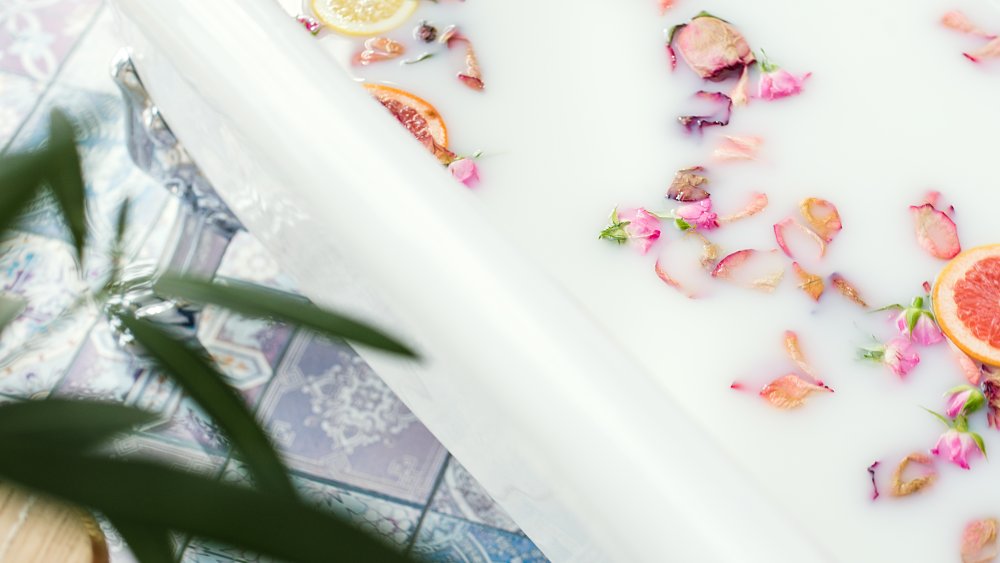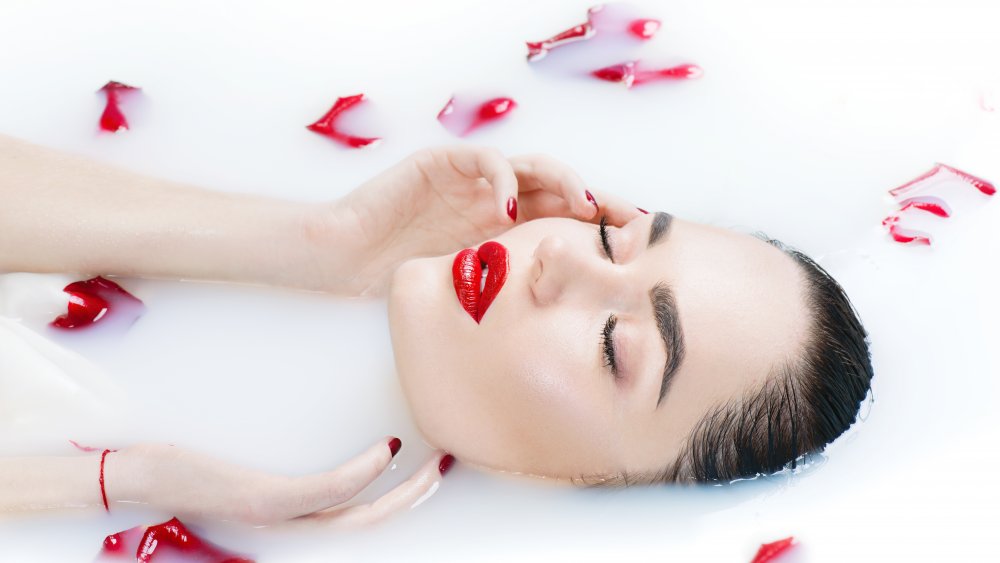What A Milk Bath Really Does To Your Skin
"Do you only bathe in French mineral water?" The Guardian asked Mariah Carey in 2018. "No, I bathe in milk," answered Carey, sending the internet into a tailspin. For what it's worth, so does celebrity aesthetic doctor Barbara Sturm (via Tatler). You might not know Sturm. But you do, in all likelihood, know Kim Kardashian and Victoria Beckham. And they (along with their picture-perfect skin) have given Sturm their seal of approval.
In all seriousness, milk baths just might be the one beauty routine that you never knew you needed. You may have heard that milk is an effective cure for sunburn, skin irritations, hyperpigmentation, eczema, or psoriasis. But there's no conclusive evidence to prove these claims are true, per Verywell Health. That said, Barbara Sturm notes that to bathe in milk is to soak your skin in the fats, proteins, and vitamins it needs to stay soft, smooth, and hydrated.
You can also take it from Michelle Henry, clinical instructor of dermatology at Weill Cornell Medical College, who explains that the proteins and vitamins in milk can moisturize and calm inflamed skin, per Good Housekeeping. Its fat, vitamins, and mineral content is also incredibly nutritive. Vitamin E, for example, says Sturm, can boost the health of your skin's cells. Not only this, but milk's lactic acid content is a gentle exfoliator, helping to break off dead skin cells and leaving your skin smoother.
How to prepare a milk bath to improve your skin
Don't worry, there's no need to fill up your tub with gallons of milk. Pour one to two cups into warm bath water after you've filled the tub, to prevent "thready bubbles" (via Good Housekeeping). As for what kind of milk you should use, that's up to taste. Whole milk, coconut milk, buttermilk, rice milk, soy milk, almond and cashew milk, canned milk all work nicely. If you want to be queenly, opt for goat milk, like Cleopatra is rumored to have done (via Tatler). It's entirely up to you. If you want to use dried milk, you can do that, too. In that case, Verywell Health suggests 1/3 to 2/3 cups is enough.
That's all you need. Although depending on how fancy you want to get, you might consider adding a little bit of honey (Good Housekeeping suggests 1/4 cup, Verywell Health suggest a tablespoon) and perhaps finely ground oats, lavender buds, rose petals, Epsom or sea salt, or your favorite essential oils.

